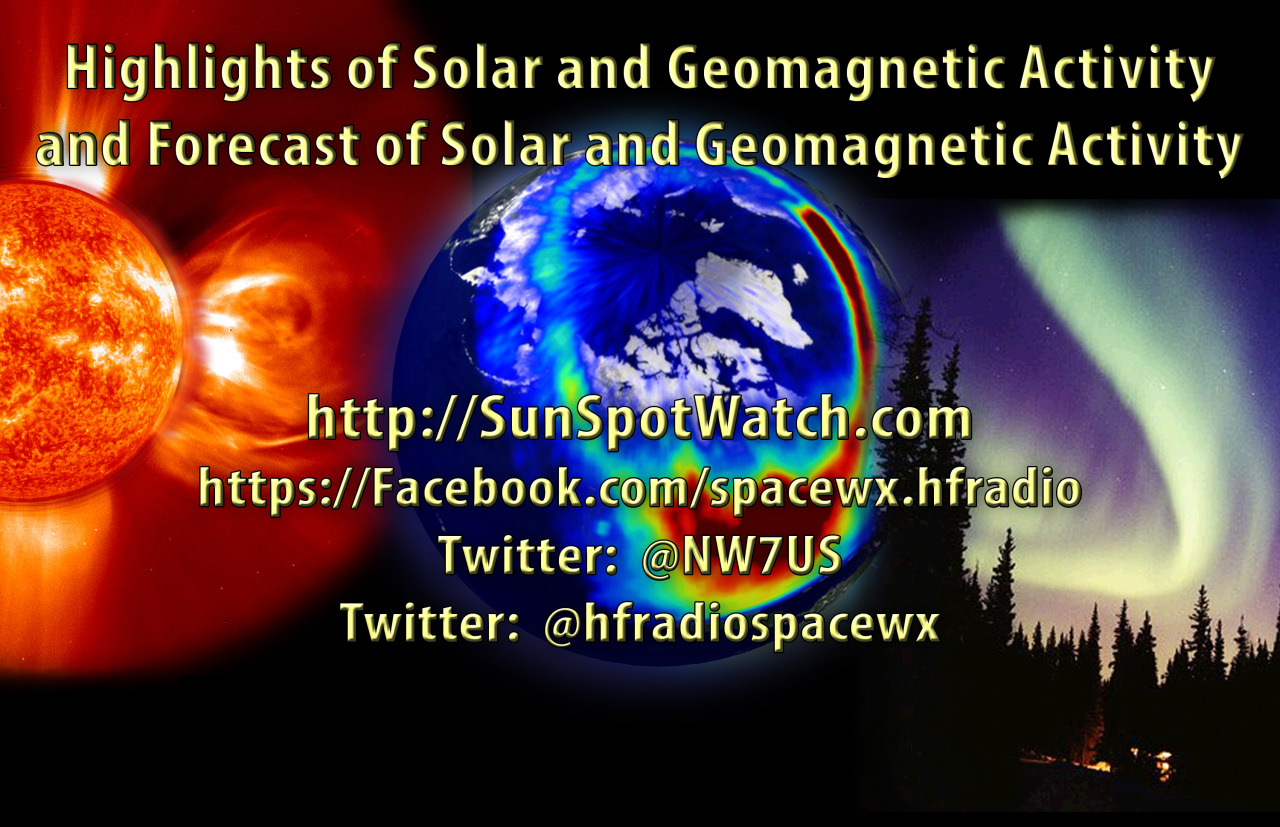 Weekly Propagation Summary – 2015 Dec 28 16:10 UTC
Weekly Propagation Summary – 2015 Dec 28 16:10 UTC
Here is this week’s space weather and geophysical report, issued 2015 Dec 28 0317 UTC.
Highlights of Solar and Geomagnetic Activity 21 – 27 December 2015
Solar activity ranged from low to moderate levels (R1-Minor) with low activity observed on 25, 26, and 27 Dec, and moderate activity observed on 21, 22, 23, and 24 Dec. The majority of the flare activity occurred from Regions 2472 and 2473. Region 2472 (N04, L=331, class/area Dai/170 on 23 Dec) produced an M2/Sf at 21/0103 UTC and an M1/1n at 21/1014 UTC before decaying. Region 2473 (S22, L-331, class/area Fkc/590 on 26 Dec), the largest region on the disk, produced an M1/Sf at 22/0341 UTC, an M4/1f at 23/0040 UTC, and an M1 at 24/0212 UTC. Multiple eruptions were observed in coronagraph imagery, but all were directed off the east limb and none were geoeffective.
No proton events were observed at geosynchronous orbit.
The greater than 2 MeV electron flux at geosynchronous orbit was at normal to high levels through the entire week 21 December – 27 December.
Geomagnetic field activity reached G1 (Minor) to G2 (Moderate) storm levels early on 21 Dec due to effects from a CME that erupted on 16 Dec. G2 storm condtions were observed from 21/0000-0600 UTC, with G1 storm conditions occurring in the 21/0600-0900 UTC synoptic period. Solar wind parameters at the ACE spacecraft were enhanced with Bt reaching as high as 18 nT and prolonged periods of southward magnetic field (-Bz). An isolated period of active conditions was observed early on 22 Dec due to lingering CME effects. Active conditions occurred late on 23 Dec due to weak substorming. Quiet to unsettled conditions were observed on 24, 25, and 27 Dec. The geomagnetic field reached G1 (Minor) storm conditions late on 26 Dec (26/2100-2359 UTC) due to a negative polarity coronal hole high speed stream (CH HSS).
Forecast of Solar and Geomagnetic Activity 28 December – 23 January 2016
Solar activity is expected to be at low to moderate levels (R1-Minor) throughout the period. Moderate activity is likely through 03 Jan as Regions 2472 (N04, L=329) and 2473 (S22, L=332) rotate off the disk. Low activity levels are expected on 04-23 Jan with moderate activity possible on 15-23 Jan as Regions 2472 and 2473 rotate back onto the visible side of the disk.
No proton events are expected at geosynchronous orbit.
The greater than 2 MeV electron flux at geosynchronous orbit is expected to be at moderate to high levels on 28 Dec – 12 Jan in response to coronal hole high speed stream (CH HSS) effects. Normal to moderate levels are expected on 13-23 Jan.
Geomagnetic field activity is expected to be at active levels on 01, 03 Jan with G1 (Minor) storm conditions on 02 Jan due to a positive polarity CH HSS. G1 storm conditions are likely again on 06 Jan with active levels following on 07 Jan due to a positve polarity CH HSS. 10 and 11 Jan are likely to see G1 storm and active conditions, respectively due to a negative polarity CH HSS. Generally quiet to unsettled conditions are expected from 13-23 Jan.
Don’t forget to visit our live space weather and radio propagation web site, at: http://SunSpotWatch.com/
Live Aurora mapping is at http://aurora.sunspotwatch.com/
If you are on Twitter, please follow these two users: + https://Twitter.com/NW7US + https://Twitter.com/hfradiospacewx
Get the space weather and radio propagation self-study course, today. Visit http://nw7us.us/swc for the latest sale and for more information!
Check out the stunning view of our Sun in action, as seen during the last five years with the Solar Dynamics Observatory (SDO): https://www.youtube.com/watch?v=zXN-MdoGM9g
We’re on Facebook: http://NW7US.us/swhfr













